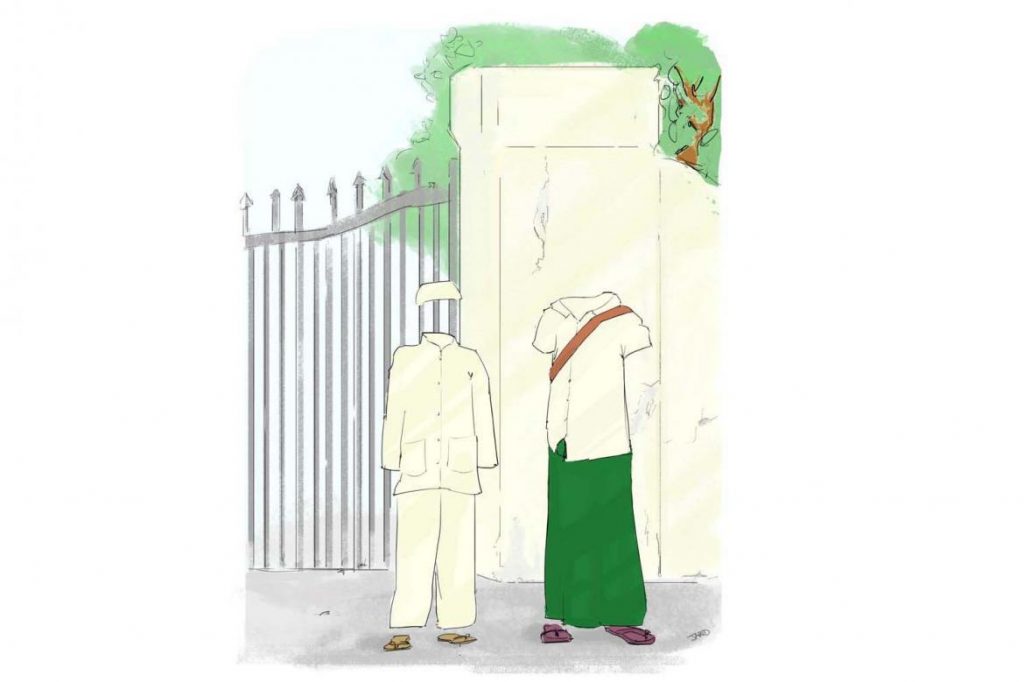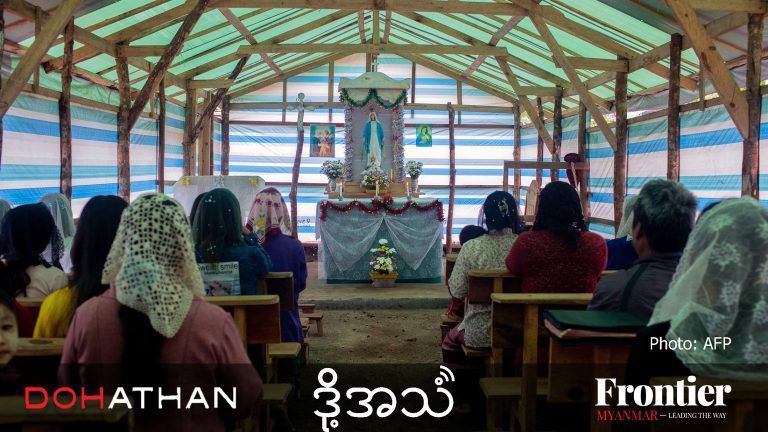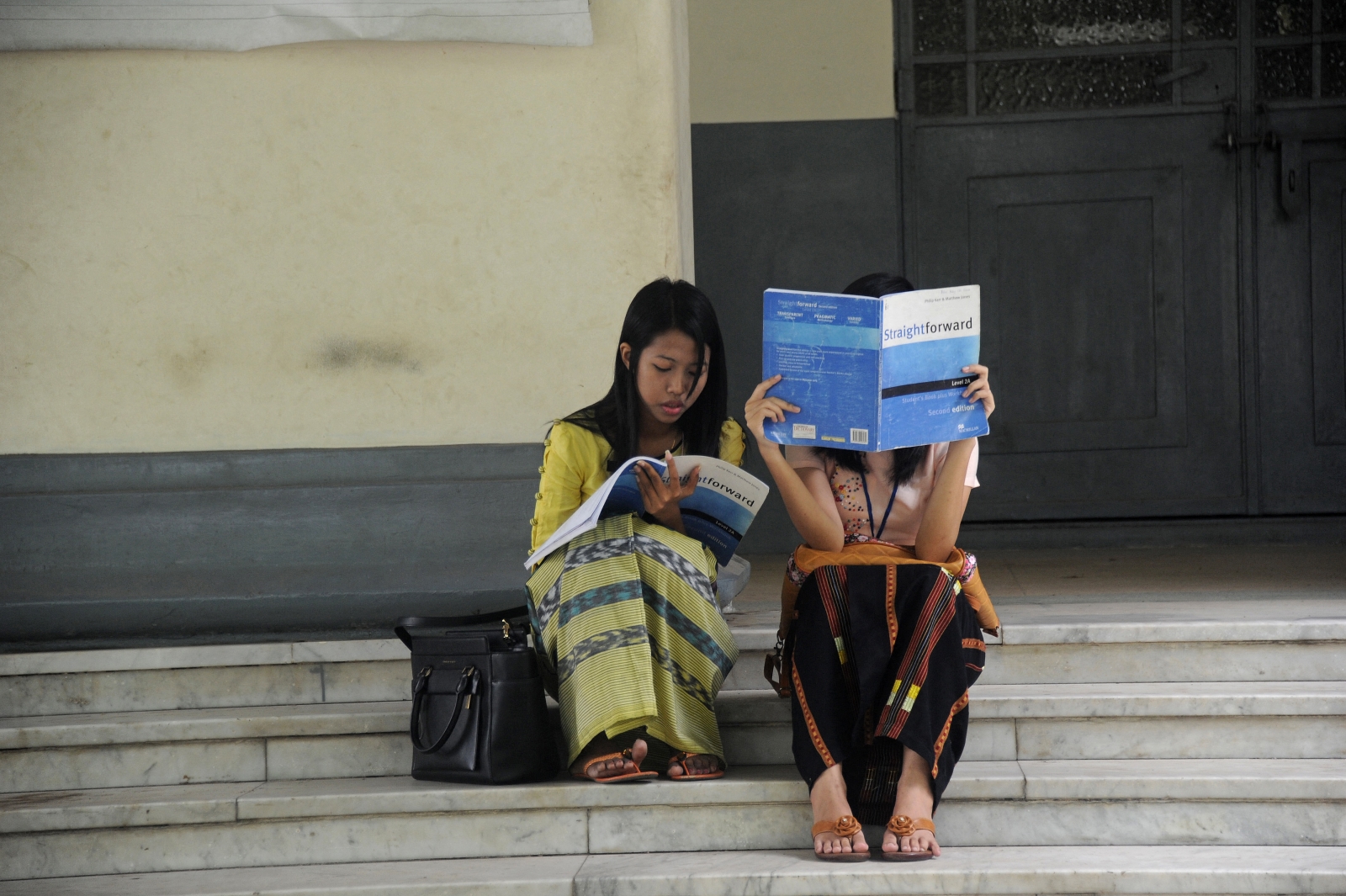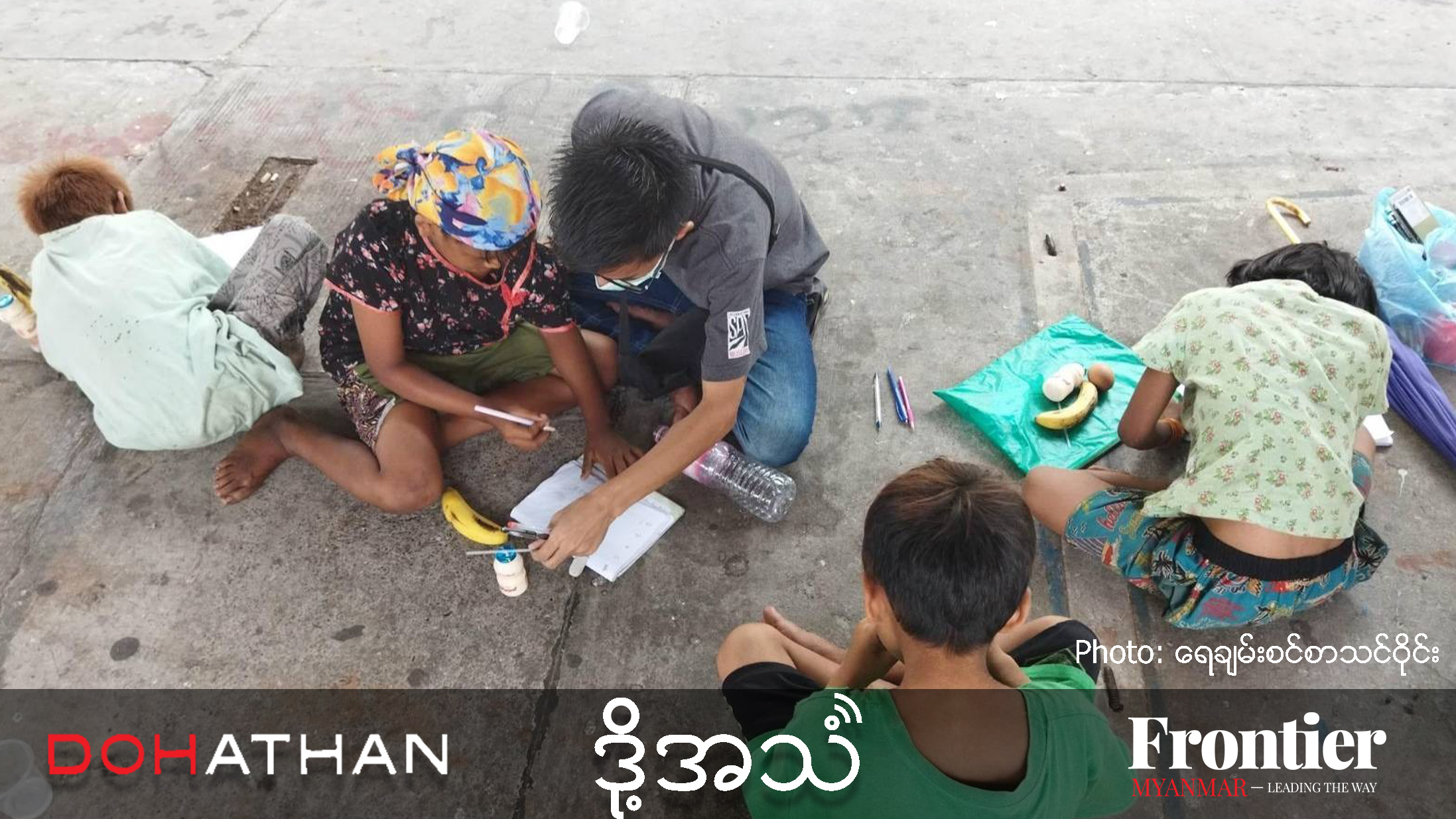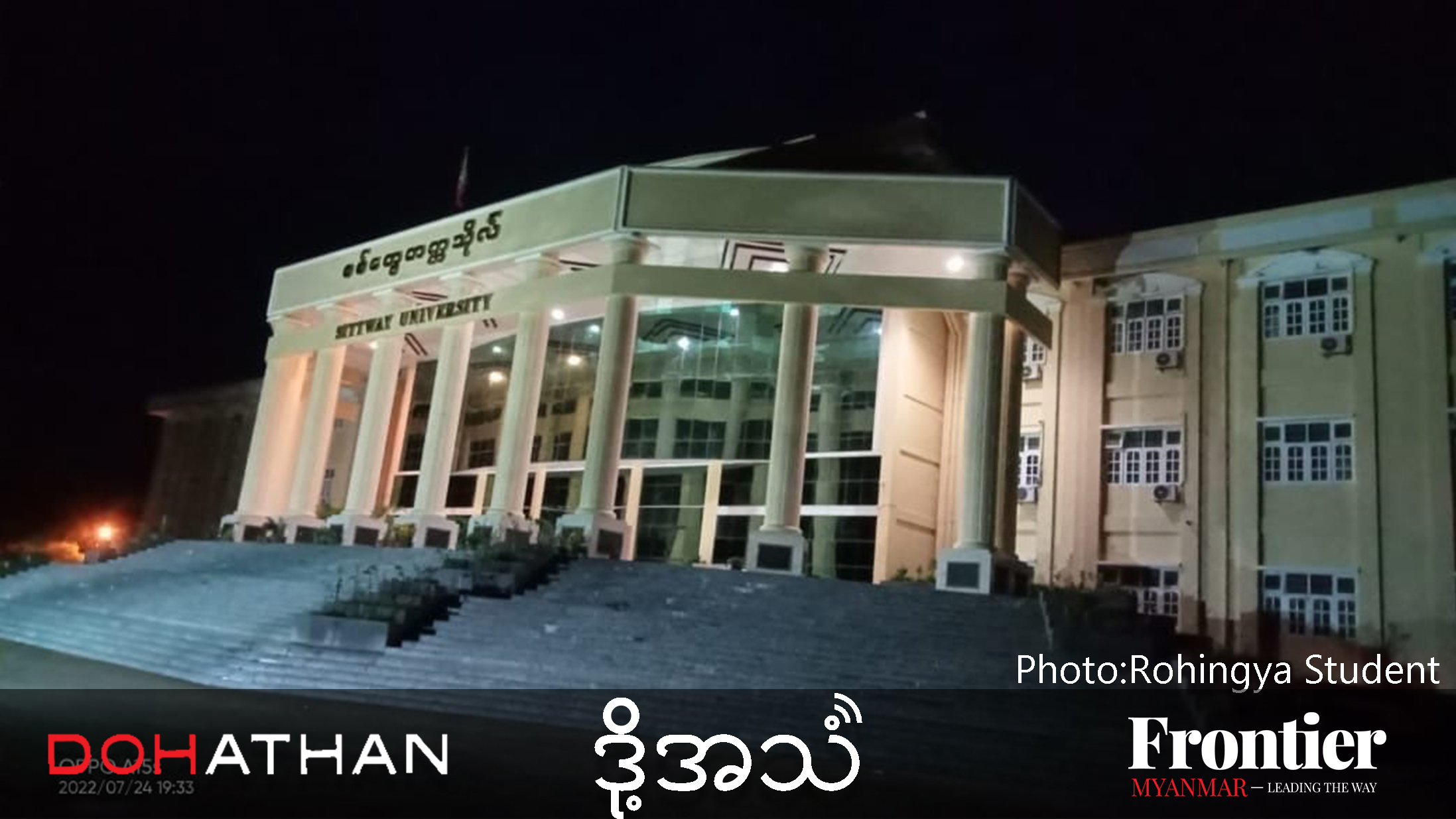The idea that “to be Burmese is to be Bamar and Buddhist” should be supplanted by a broader notion – that “to be Burmese is to be born in Burma”.
By THAN TOE AUNG | FRONTIER
GROWING UP, I had an identity crisis. I always had questions about who I was and where I belonged.
Being a Muslim kid in a predominantly Buddhist society, my childhood was an unhappy one. My family was one of the few Muslim families in the ward where we lived on the outskirts of Yangon. At school, I was the only Muslim kid in class. In our classroom, I was often referred to as kalar, a racial epithet commonly used against people of South Asian descent, instead of the Burmese name my parents gave me.
There were times when my Bamar Buddhist teachers at the government school would tell the whole class – while looking at me straight in the eyes – how kalar were bad people because of their religious practices such as slaughtering cows during the Eid festival. One teacher would also come into the classroom, frown, sniff, and say the room stank of “kalar scent”. The rest of the class would turn around, look at me, and snigger.
I was often told by kids to go back to kalar pyay (meaning kalar country or kingdom) because Burma is a Buddhist country, and some would tell me that I would be force-fed pork if I did not behave well.
Support more independent journalism like this. Sign up to be a Frontier member.
In my teenage years, I began to think more about identity. I would ask myself, why am I being treated like this? Why can’t they see past my skin colour and religion? Why can’t I tell them that I belong to this country as much as they do without being ridiculed? Even now, I face these questions. I have never felt I really belonged. I know I am not alone in feeling this way.
I eventually came to realise that I was asking the wrong things. The real question is, how do we, the minorities, reclaim a sense of belonging to this country that we consider home? Moreover, as challenging as it may seem, how do we persuade the majority ethnic and religious community, Bamar Buddhists, to support an inclusive common identity?
Before I continue, a note on terms.
I use the name “Burma” here because I don’t consider the name “Myanmar”, imposed by the military junta in 1989, to be legitimate. One might argue that neither is “Burma”, because the British colonial government imposed it on the country but, in the absence of a new name chosen by the people, I will stick to the name the country had at independence. I also use “Burmese” to refer to everyone born and living in Burma, not just the Bamar.
The common conflation of “Burmese” with Bamar and Buddhist identity is a symptom of the general exclusion of religious and ethnic minorities. The notion that “to be Burmese is to be Bamar and Buddhist” is deeply ingrained. When I identify as Burmese, people in Burma often respond with, “But aren’t you Muslim?” I then have to explain that Muslim is not a race, and that anyone can be a Muslim if they want to be.
I often hear people from the United States and Britain, from a variety of ethnic backgrounds, call themselves American and British, even if their parents or grandparents came from other countries. Although this might not be true for all American and British people of colour, they seem able to identify with the country that they were born or raised in to a far greater extent than minorities in Burma.
Burma’s minorities can roughly be placed into three groups: those that have found a sense of belonging by assimilating into the majority Bamar culture, those that proudly assert a separate ethnic identity, and those whose members are confused about their identity. I belong to this last group.
The first group includes many Burmese Chinese, whose complexion and embrace of Buddhism has made it easier for them to assimilate and avoid the discrimination directed at Muslims of South Asian descent (though they often experience similar difficulties while applying for citizenship cards and passports). One example is Burma’s own former dictator, General Ne Win, who had Chinese ancestry but presented himself as a Bamar Buddhist and promoted Bamar Buddhist nationalism.
The second group includes those who identify themselves, not as “Burmese” or “Myanmar”, but as one of the ethnic nationalities such as Kachin, Shan, Mon, Chin and Karen. At conferences abroad, I have often heard them introduce themselves by saying, for instance, “I’m from Myanmar, but I’m Kachin”.
The last group includes those, like me, who have been forced to question their identity and sense of belonging from the beginning, due to multiple layers of discrimination.
In Burmese government schools, each time a teacher enters the classroom, students have to stand, press their palms together and greet the teacher with a Pali verse that glorifies teachers as one of the five “universal benefactors” in Buddhist cosmology. I would perform every part of this ritual besides putting my palms together – a gesture also performed by Buddhists in front of Buddha images and robed monks – because, as a Muslim, I am not supposed to make gestures rooted in other religions. I would fold my arms together instead, as a secular means of showing respect.
Because of this, when I was in the ninth grade, one Buddhist teacher put me in a corner at the back of the classroom, where I remained for months, because I refused to greet the teacher in a way that was against my faith. I felt ostracised, unseen, unheard – a Muslim student whose presence, at best, did not matter but, at worst, was an affront to the uniformity of Burma’s Buddhist culture. Eventually, I gave in, and I began putting my palms together in the Buddhist style each time a teacher entered the room. This allowed me to move out from the corner, but deep inside I felt guilty for going against my faith. I never told my parents about how I gave in, knowing that, if I did, they would come to the school and complain, which would only make the situation worse for me.
Virtually every classroom in government schools has a small shrine with a Buddha image. In the morning, before classes, Buddhists squat on their chairs, hold their palms together and loudly chant Buddhist prayers. At the schools I attended, while the Buddhist students prayed, the non-Buddhist students such as myself would sit next to the chanting crowd and feel ashamed for being different. Every school day began like this for 10 years.
One time during middle school, my teacher caught a Buddhist friend and I talking during prayer time. She scolded us, saying to my friend, “Aren’t you a Buddhist? Don’t you know it’s prayer time?” before turning to me and saying, “Don’t interrupt other people’s prayer. You live in a Buddhist country. You have to respect our religion or else go back to kalar pyay.” As she spoke, the whole class looked at me with disapproval. I was overwhelmed by sadness. I wanted to say that this was my country, too; that I grew up eating ngapi (Burmese fish sauce), speaking Burmese and wearing a longyi (sarong); that I was as Burmese as the rest of them. But I simply looked down as tears welled in my eyes.
This kind of Us vs Them attitude is one of the reasons why Burma does not have a strong, inclusive national identity. In the eyes of the majority, minorities like me are “guests”, even if we were born and raised in Burma. The military government reinforced this attitude through decades of discriminatory policies and a toxic education system premised on Bamar supremacy.
This deliberate “othering” of minorities becomes blatant when we apply for citizenship documents. To be recognised as a citizen, you need to have one of three documents: a CSC, denoting “full” citizenship, or a “Naturalised” or “Associate” Citizenship Scrutiny Card denoting subordinate forms of citizenship. If you are not eligible for these documents, you are deprived of most rights. You cannot vote or travel freely within the country and are not legally allowed to own land or rent an apartment. You are effectively made stateless.
It took six years for my sister and me to receive citizenship documents even though we were eligible by law. The immigration officials told us they needed to conduct “extra screening” because we were Muslim and of “mixed blood” – a term wielded against residents of South Asian and Chinese descent. Ultimately, we had to bribe the officials – as does practically every Muslim.
Citizenship cards state the holder’s race and religion. This pushes Muslims to accept nonsensical foreign identities – for instance, having their “race” stated as Indian, Pakistani or Bengali – so that they can be branded as “mixed blood”, even though, in most cases, their families have lived in Burma for generations.
At the passport office, there is separate queue for “mixed blood” applicants. While Bamar applicants and others whose ethnicity is included in the government’s list of “135 national ethnic races” receive only casual scrutiny, Muslims and others of “mixed blood” end up in a small room face-to-face with an immigration officer who threatens to cancel their applications unless he receives a bribe.
The belief that Muslims are essentially “foreigners” begins in the classroom. Prior to Ne Win’s seizure of power in 1962, Burma had one of the best education systems in Southeast Asia; but under military rule, the education system existed largely to transmit military propaganda. As a result, the history textbooks still used in government schools are highly inaccurate and often portray ruthless Bamar kings as “heroes”, ethnic minorities as “rebels” and “savages”, and Muslims and anyone of South Asian descent as “foreign intruders”.
Once, in middle school, we were reading from a history book about the activities of Chettiars, a South Indian caste group that migrated to Burma during British rule. The text said the Chettiars, many of whom were moneylenders, bullied local people, raped Bamar women and confiscated land when loans could not be repaid. When we finished reading the text, one of my classmates pointed at me and shouted, “They were his relatives.” The whole class turned to look at me and laughed hysterically. During the midday break, instead of having lunch I went to the toilets and quietly cried.
Due to the Burmanisation policies of the former military government, we presently have the Bamar Buddhist identity disguised as our national identity. Almost everyone from an ethnic or religious minority community has grown up without access to an identity that extends beyond their own group.
Building a shared national identity will be a challenging task – but it is an essential one. It will take years to dismantle decades of discriminatory policies and transform the education system. Schools should highlight the benefits of diversity rather than teaching inaccurate history and stigmatising minorities. Instead of imposing a homogeneous Bamar national identity, the government should start embracing pluralism and construct an all-inclusive national identity. Those who make and implement policy should be given diversity training and be held accountable for every blatant act of discrimination.
Ultimately, the idea that “to be Burmese is to be Bamar and Buddhist” should be supplanted by a broader notion – that “to be Burmese is to be born in Burma”. Only then, can we create the inclusive and cohesive society to which we aspire.


